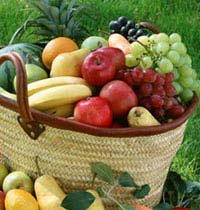The storage of vegetables and fruits in plastic bags is a scientific preservation method commonly used by people in winter.

The principle is to reduce the concentration of oxygen, increase the concentration of carbon dioxide, so that fruits and vegetables are in dormant state and extend the storage period. However, the storage time should not be too long.
Because fruits and vegetables are organic foods, the moisture content is high (60% - 95%), and contains water-soluble nutrients and enzymes. There is still strong breathing activity throughout the entire storage period. In general, every 10 degrees Celsius increase, the respiratory intensity doubles. Under aerobic conditions, sugars or other organic substances in fruits and vegetables are oxidized and decomposed to produce carbon dioxide and water, and a large amount of cooked material is released; Under the conditions, the sugar cannot be oxidized and can only decompose to produce alcohol, carbon dioxide, and emit a small amount of heat.
However, the concentration of carbon dioxide cannot rise indefinitely, but it can only increase by 10%. The drop in oxygen concentration should not exceed 5%, otherwise it will be necessary to decompose more nutrients in order to obtain enough energy for vital activities in the absence of oxygen. At the same time, alcohol produced by hypoxic respiration will remain in the fruit and will cause dehydration and spoilage. Therefore, the storage time of fruits and vegetables in plastic bags should not be too long.
If you want to store fruits and vegetables in plastic bags, please do not be afraid. Open the mouth of the plastic bag every two or three days, release carbon dioxide and heat, and then put the mouth on it. This will reduce the occurrence of decay and deterioration.
Tropical fruits in the refrigerator
Tropical fruits of various colors, such as dragon fruit, mango, litchi, longan, papaya, rambutan, etc. Once these fruits are bought in the home, they are put into the refrigerator. Within a few days, the peels begin to sag and dark brown spots appear. This shows that the fruit has been Frostbite.
Most tropical fruits are cold and should not be kept in refrigerators. Frostbite fruit not only destroys nutrients, but also deteriorates easily. In a few days, the flesh will rot.
In general, temperate fruits, such as grapes, apples, pears, etc., can be kept fresh in the refrigerator. When bananas and mangoes are stored at a temperature of 10°C, the peels will turn black; when pineapples are preserved at 6°C to 10°C, not only will the peels change color but the flesh will also be in a water-soaked state; litchi and longan, rambutan, etc. Stored at 1°C to 2°C, the color of the outer skin will darken, and the inner peel will appear as spots like burns. Such fruits can no longer be eaten.
Tropical fruits are best stored in dark, cool places. If you must put in the refrigerator, it should be placed in the vegetable and fruit trough with higher temperature. It is better not to save more than two days.
The daily preservation of fruits can be divided into the following four categories:
Do not put in the refrigerator in the first category, otherwise it will be frostbite. Such as: bananas, starfruit, lotus root and so on.
The second type can be placed in the refrigerator, but it must be cooked first (ie, unripe fruit can not be placed in the refrigerator). Such as: durian, mango, custard apple, passion fruit, persimmon, papaya and so on.
The third category must be placed in the refrigerator to last long. Such as: peach, mulberry, plum, litchi, longan, rambutan, cherry, chestnut, guava, grape, pear, strawberry, mangosteen, dragon fruit, melon, grapefruit and so on.
The fourth type can be stored at room temperature or refrigerator. Such as: lemon, pineapple, grape, orange, olive, green jujube, apple, watermelon, orange, coconut, grapefruit, sugar cane and so on.
Dog Latex Toys,Latex Pet Toy,Dog Toy Squeaky Latex,Dog Toy Latex Crocodile
Dongguan King Pet Toys Co.,Ltd , https://www.kingpettoys.com